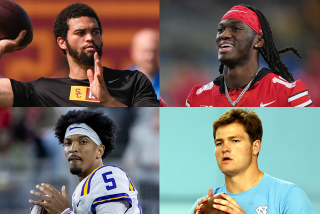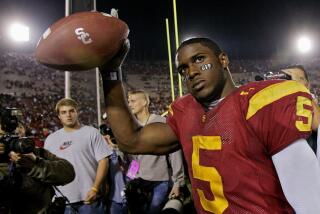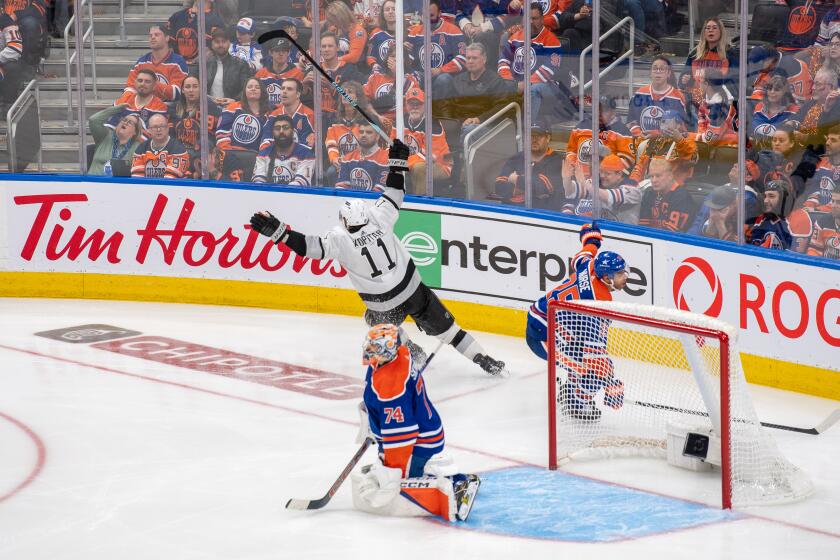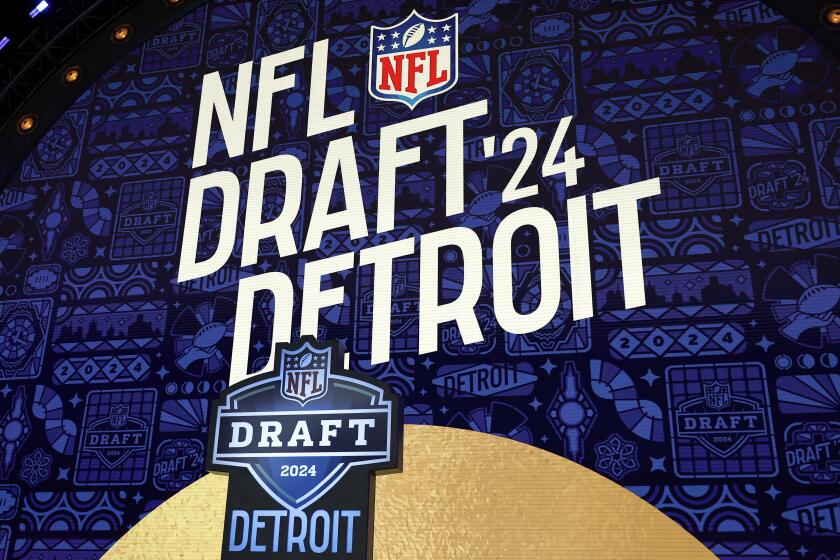Stanford’s student bodies are stronger
Some people probably think quarterback Jim Plunkett led Stanford to its last Rose Bowl victory.
It’s understandable if memories are foggy, because it’s been that long.
It was actually Don Bunce, backed by the “Thunderchickens” defense, back in 1972.
The losing team was Michigan and Stanford was still nicknamed “Indians.”
No wonder, then, Stanford so thunderously celebrated its 20-14 win over Wisconsin on Tuesday in front of 93,359 on a chilly, crisp day.
You forget how hard it is to do this.
Northwestern, Stanford’s academic rival, won a bowl game Tuesday for the first time since the 1949 Rose Bowl.
Casual observers of the 99th Rose Bowl might have wondered how Granddaddy stayed awake during Stanford’s dirge march to delirium.
At halftime, the Stanford band paid homage to “cheese,” then left the field smelling like Limburger.
The second half produced one chip-shot, 22-yard field goal. In the third quarter, the teams combined for seven punts and three first downs. The game produced more than twice as many running plays as passing plays, 80 to 37.
If only Wisconsin could have scraped together 17 more passing yards, it would have reached an even 100 for the game.
Sometimes, though, destiny happens when you least expect it.
Tennessee had Peyton Manning for three years but won the national title the year after he left.
Stanford had Andrew Luck at quarterback for three years, but it took freshman Kevin Hogan to finally win the Rose Bowl.
Tuesday’s game was all-out, grind-it-out. The coaches, David Shaw and Barry Alvarez, were determined to squeeze all the life out of a game and live with the consequences.
“We’re not going to score 40 points a game,” Shaw said afterward. “That’s just not how we’re built right now.”
Both teams game-planned to a close finish -- the difference being Stanford is much better at closing out.
Alvarez’s team punted and defended its way through the day with the lone objective of having one chance to win in the end.
“You’re at midfield, or close to midfield, with a chance to win the Rose Bowl,” Alvarez said afterward. “I just felt like maybe we were a team of destiny. . . . Like somehow we were going to find a way to score.”
Wisconsin got its chance -- and flubbed it.
After Jordan Williamson’s field goal put Stanford up by six, Wisconsin’s sputtering offensive brigade got one last chance, from its 25, with 4:23 left.
Melvin Gordon’s 11-yard dash on first down got Wisconsin closer to Alvarez’s midfield, striking-distance goal.
The plan fizzled, though, when quarterback Curt Phillips’ tipped pass was intercepted by Usua Amanam at the Stanford 42.
“I happened to be in the right place at the right time,” Amanam would modestly say.
Stanford ran out the final 2:03, then ran off the field.
The game was completed in 3 hours 6 minutes -- time flies when the ball rarely travels over anybody’s head.
“Coach told us this game was going to go by quick,” Stanford running back Stepfan Taylor said.
Wisconsin was left with a slower burn as the loser of three straight Rose Bowls. The hat trick has been matched only two other times: California lost three straight from 1949-’51 and Michigan lost the games of 1977, ’78 and ’79.
It wasn’t that Wisconsin was totally inept. The Badgers gained 218 yards rushing on Stanford’s vaunted defensive front.
Montee Ball, the only player to score a touchdown in three Rose Bowls, finished with 100 yards in 24 carries.
Wisconsin’s problem is it was built to play close games it can’t seem to win. The Badgers, who finished 8-6, lost three games this season by a total of 12 points in regulation and three in overtime.
They had a chance to win Tuesday, just as they had a chance to beat Texas Christian and Oregon the previous two seasons.
“This stings just as much,” Ball said. “We fell short, extremely short.”
Ball thought for sure this year would be different.
“This is not the way we wanted to go out,” he said. “At this point now, it is what it is.”
Amanam’s interception officially ended the Badgers’ frustrating day of chasing their tail.
Spotting Stanford the first 14 points was a terrible idea and seemed destined to fail. The Cardinal scored on its first two drives and threatened to turn the game into a rout.
Stanford took the opening kickoff and drove 80 yards in seven plays, including a trick-play pass from Drew Terrell to fellow wide receiver Jamal-Rashad Patterson for 34 yards to the Wisconsin 16, and scored on Kelsey Young’s 16-yard sweep around left end.
And on Stanford’s second possession, Hogan’s 43-yard pass to tight end Zach Ertz set up Taylor’s three-yard scoring run.
Wisconsin finally found its footing in the second quarter when Ball scored on an 11-yard touchdown run.
After Stanford extended its lead to 17-7 on Williamson’s 47-yard field goal, Wisconsin cut it to three when Phillips hit Jordan Fredrick on a four-yard scoring pass 19 seconds before halftime.
The Badgers had momentum and history on their side. In the 2000 Rose Bowl, they rallied to win after trailing Stanford, 9-3, at the half.
But there was no second-half magic this time. Wisconsin went three-and-out on its first possession and then basically assumed the crouch position.
Stanford pounded out a hard-fought win and completed a joyous 12-2 season.
“It was about us being us,” said Shaw, Stanford’s winning coach.
It was also about Wisconsin being Wisconsin.
--
More to Read
Get our high school sports newsletter
Prep Rally is devoted to the SoCal high school sports experience, bringing you scores, stories and a behind-the-scenes look at what makes prep sports so popular.
You may occasionally receive promotional content from the Los Angeles Times.







